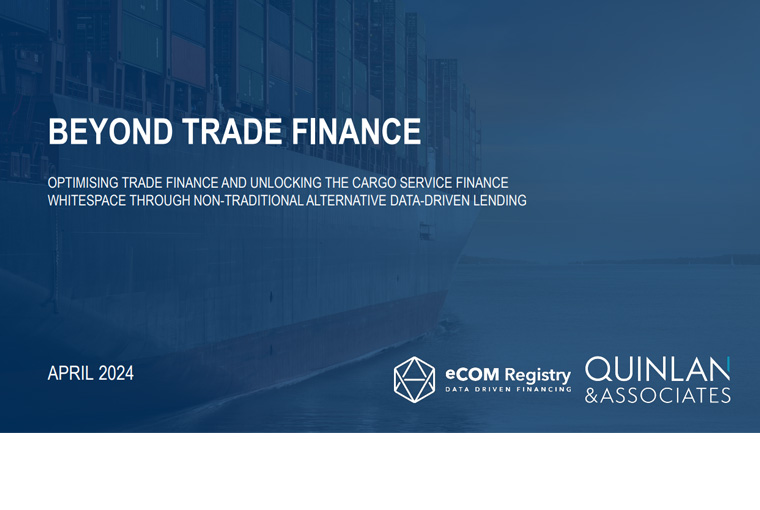In the realm of alternative data-driven lending, a promising avenue emerges in the quest to bridge the substantial USD 30 billion financing gap within Asia Pacific’s dynamic cargo service market.
Embarking on a thorough exploration of the intricacies surrounding trade finance and cargo services in Asia Pacific, particularly in Hong Kong, eCOM Registry in collaboration with Quinlan & Associates presents a comprehensive analysis. Our latest report delves deep into the barriers obstructing access to funding, which have contributed to the persistent financing gap in the region. Furthermore, we offer insightful strategies for lenders to skillfully navigate these challenges, emphasizing the efficacy of alternative data-driven lending.
TRADE FINANCE CHALLENGES IN HONG KONG
Post the tumultuous era of COVID-19, international trade volumes have witnessed a significant surge, with Asia Pacific accounting for a substantial 40% share of the global trade market valued at USD 23 trillion in 2023. Notably, Hong Kong maintains a distinctive and influential position within the region, consistently ranking among the top 10 global markets by total trade value.
Nevertheless, the landscape of local trade finance in Hong Kong showcases a concerning decline. Various macroeconomic and geopolitical factors have contributed to financial institutions’ cumbersome back-end processes, resulting in significant obstacles for borrowers. This predicament has culminated in a notable USD 7.9 billion trade finance gap within the region.
ADDRESSING THE FINANCING CRUNCH IN THE CARGO SERVICE SECTOR
An often overlooked yet critical component of the global trade finance ecosystem is the intricate network of stakeholders involved in the cargo service sector. This network comprises exporters, importers, freight forwarders, and shipping lines crucial for efficient goods trade.
Regrettably, many of these stakeholders encounter persistent working capital shortages, particularly due to mismatches between payable and receivable maturity periods. Moreover, in recent years, a multitude of factors have been exacerbating these challenges, further straining the sector.
Despite a clear demand for credit, most financial institutions have hesitated to extend their services to cargo service participants, leading to a significant USD 553 million local cargo service financing gap.
FORGING A PATH FORWARD FOR LOCAL LENDERS
As we gaze into the future, the potential for innovative lenders to seize the opportunities presented by trade finance and cargo service financing in Hong Kong appears immense. The key lies in optimizing existing trade finance processes and filling the longstanding financing gaps within the cargo service sector.
Harnessing data from various sources such as ports, terminals, and customs, lenders can revolutionize their traditional practices across the customer journey—from streamlined onboarding processes (e.g., KYC/KYB) to dynamic risk modeling (e.g., real-time loan pre-qualification) to robust credit risk management practices (e.g., co-lending initiatives). With a sizable financing gap awaiting innovative solutions, the imperative to capitalize on this opportunity is undeniable.
For the complete report, visit
HERE.

